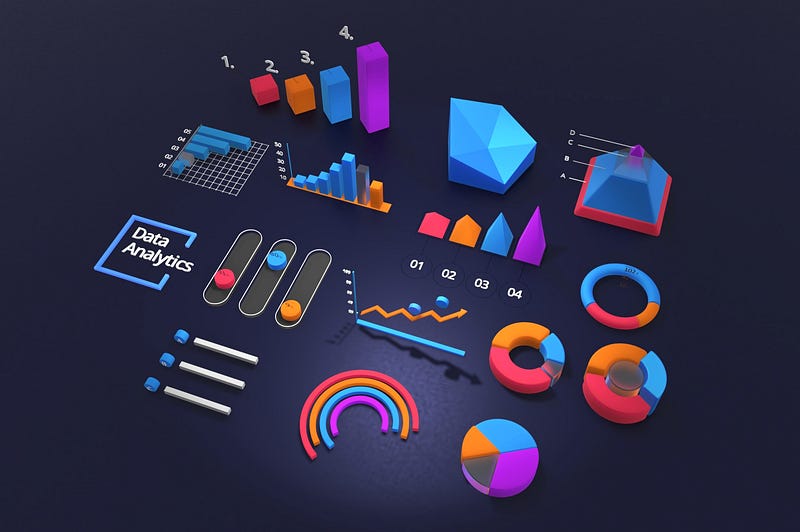Data-Driven Resolutions for Personal Growth in 2024
Written on
Chapter 1: Introduction to Data-Driven Resolutions
As the New Year approaches, it brings with it a renewed sense of hope and the desire to set resolutions. However, the reality of maintaining these well-meaning commitments can be quite challenging. A primary reason for the struggle lies in the lack of specificity and measurable criteria for tracking progress. To address these issues, a move towards data-driven strategies is suggested. By utilizing data analytics in the goal-setting process, individuals can refine their approaches, significantly improving their chances of achieving personal growth in the coming year.
Chapter 1.1: The Value of Data in Personal Development
Data plays a crucial role in personal growth by providing objective insights. Unlike subjective self-assessments, data introduces clarity and precision. For instance, in fitness, rather than relying solely on personal feelings, one can track objective metrics such as exercise frequency and intensity, resulting in unbiased evaluations. In the realm of education and skill acquisition, data allows for the measurement of progress through milestones and time invested, promoting accountability. This transition from personal feelings to quantifiable metrics empowers individuals to make informed choices, as seen in language learning, where daily study hours and proficiency test scores offer a clear picture of progress. Embracing data enables individuals to navigate their growth journeys with clarity, adjust their strategies based on informed decisions, and celebrate real milestones and achievements.

Chapter 1.2: Revolutionizing Growth with Habit-Tracking Apps
The emergence of habit-tracking applications has transformed personal development, allowing users to log and monitor their daily activities with ease. Apps like HabitBull, Streaks, and Strides provide user-friendly interfaces for recording goals ranging from fitness routines to reading targets. Beyond mere convenience, these tools generate essential data points that facilitate insightful analysis. For example, a fitness application can aggregate data on workout frequency, duration, and types of exercises, providing users with a comprehensive overview of their fitness habits. Likewise, a habit tracker can compile information on task completion times and efficiency, enabling users to identify patterns and optimize their performance. These apps essentially convert daily activities into quantifiable data, offering users a clear record of their progress and adherence to established habits. By integrating analytics into habit formation, these tools promote informed decision-making and continuous improvement across various life aspects.
The first video titled "How to Create a Better Year in 2024: New Year Journaling" provides actionable strategies for setting and maintaining resolutions through journaling.
Chapter 1.3: The Power of Data Visualization
Utilizing data visualization tools is key to tracking personal progress. Various applications provide insightful reporting charts that enhance user experience. For instance, fitness apps like Garmin and Fitbit offer visually appealing graphs that illustrate trends in daily step counts, showcasing improvements in physical activity levels. Habit-tracking applications such as Habitica utilize vibrant bar charts to display completion streaks for daily tasks, encouraging users to maintain consistent habits. Additionally, financial management tools like Mint and AndroMoney employ various graphs to break down monthly expenses, helping users recognize spending patterns and make informed financial decisions. These examples highlight how data visualization enriches user engagement by transforming raw data into accessible and meaningful visual formats. By leveraging these tools, individuals can effectively monitor their habits, track accomplishments, and make informed decisions to achieve their goals.

Chapter 1.4: Selecting Metrics that Matter
To successfully embark on resolutions, it’s crucial to choose metrics that are both meaningful and achievable. For fitness enthusiasts, tracking variables such as workout frequency, duration, and weightlifting progress provides concrete benchmarks for improvement. In educational pursuits, setting measurable targets—like the number of books read or proficiency test results—enables clear assessments of progress. Similarly, for mindfulness practices, metrics could include meditation duration or consistency in daily exercises. The significance of selecting realistic and measurable targets cannot be overstated, as these metrics serve as guiding lights on the path to success. For example, envision a fitness chart demonstrating gradual increases in weights lifted, a language learning progress bar reflecting proficiency milestones, or a mindfulness application graph depicting daily meditation times. These visual tools not only inspire individuals but also serve as tangible evidence of their journey.

Conclusion: Embracing Data for Continuous Growth
In conclusion, incorporating data analytics into personal growth journeys reveals numerous advantages. From delivering objective insights and feedback to visualizing progress through charts and graphs, data empowers individuals to make informed decisions, establish realistic goals, and navigate challenges strategically. The ability to select meaningful metrics, draw inspiration from case studies, and adapt goals based on ongoing analysis creates a dynamic and personalized approach to resolution-setting. Adopting a data-driven mindset not only boosts accountability but also turns the pursuit of goals into a well-informed and fulfilling experience. As we navigate the intricacies of personal development, let us encourage each other to embrace the power of data analytics, fostering sustained progress and achievement in our resolutions. Through thoughtful integration of data, individuals can unlock their potential for ongoing growth and self-improvement.

